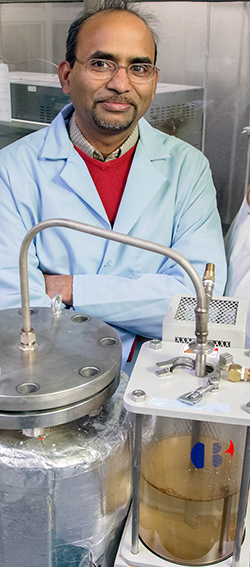
Kirtika Kohli and BK Sharma have been busy in the lab creating a greener delignification method for biofuels refinery processes. Many see biofuels as a viable alternative to fossil fuels because they are renewable and can reduce carbon emissions through plant growth. However, biomass needs to be processed before it can be converted to biofuels.
Lignin is a substance found in plants that makes them rigid and woody. Lignin helps plants resist rotting, so biomass harvested for biofuels must undergo a pre-treatment process to break down the lignin. Once lignin is removed, the remaining biomass could be easily converted to monomeric sugars, which can be converted biochemically into biofuels and other components in a biorefinery. With some additional refinement, the extracted lignin has the potential to be used in other applications in biofuels, biolubricants, polymers, binders, and biochemicals.
Current delignification processes have limited industrial applications because of their high costs, toxicity, and inability to recycle/reuse the chemicals used in the process. The team’s new method is more efficient, economic, and less toxic than current processes. It should ease operation/maintenance requirements and the need for special equipment as well as increase cost-effectiveness and recyclability. Their process is able to extract 85-88% of the lignin from Birchwood and Miscanthus (the two biomasses tested).
The team also developed a new lignin quantification method. The delignification process developed dissolves lignin into a green solvent that can be directly used for the quantification using a UV-Vis spectrophotometer. This new method is easier and more accurate than older lignin quantification methods, which were based on weight of the lignin yields that resulted in rough estimates.
Their paper is in-press and available online in Bioresource Technology: Effective Delignification of Lignocellulosic Biomass by Microwave Assisted Deep Eutectic Solvents.



